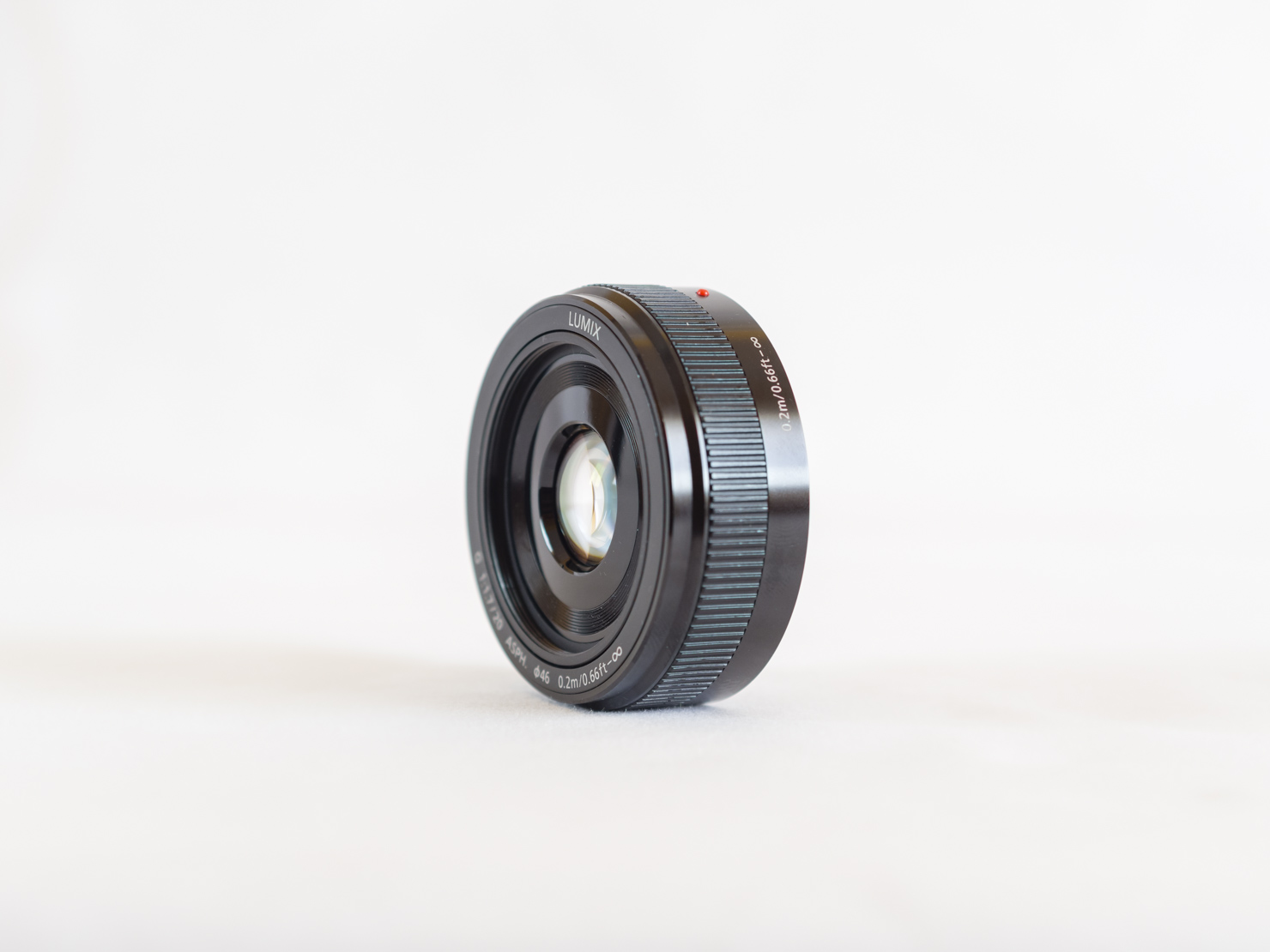Another week has come and gone, and things in the tech community seem to have fallen in a typical summer stupor. Not even the release of Windows 10 and the rumors of a likely new Apple TV managed to inspire much debate, at least among the people I follow on Twitter.
Luckily, that is not to say people haven’t been writing at all.
Issue #8: on photography, fear, developing diabetes apps, and capitalizing the Internet
As usual, you’ll find a bit of everything among this week’s excellent pieces of writing. I’m increasing the amount of commentary on some of the links this time around, while reducing the amount of links overall. Hopefully this strikes a better balance between editorial selection and volume of published pieces, while keeping the entire issue easier to digest. Let me know what you think.
Now, let’s get to it.
“Letters from a Recovering Camera Addict” Step 1: Admission | Josh White →
Josh White can’t stop himself from wanting to buy every camera he lays eyes on:
Some say there isn’t anything wrong. This ISN’T an addiction. I’m here to say, they are wrong. Addiction by definition is the inability to stop a habit.
There are many symptoms. First, the morning coffee. The coffee, a different addiction, is just a means to sit in front of a computer and feed. The first thing you may check is ESPN or the news. That makes the addiction feel less real. Next though, the reality of it.
I’m well acquainted with this feeling. I can lurk in online forums for hours, until something snaps inside my head and I manage to come back to the real world. Of course, knowing I can’t really afford most of those items helps. If money was no object though, I’d probably own a lot more garbage right now.
♤
Review: Zeiss Loxia 35mm f/2 Biogon T* | Jordan Steele →
Fantastic review, as usual, by Jordan Steele. The Zeiss Loxia lenses for Sony’s FE mount are modern incarnations of the classic all-manual lenses of old. I had read pretty much nothing but praise about these lenses until now, which is why it was a bit surprising to see Jordan taking the Loxia 35mm to the woodshed for its “terrible” bokeh:
At f/2 and other wide apertures, the bokeh on the Loxia 35mm is frankly terrible. It’s got severe bright ring outlining, can produce nervous double line behavior that is very unappealing and can easily display longitudinal CA on specular highlights. Towards the edges of the frame at f/2, specular highlights take on a rather ugly gumdrop shape with a bright outline on the curved portion that fades on the straighter edge. In some cases, this look adds a bit of character. In other situations, it can be downright offensively ugly, as seen in the shot below.
That is a huge disappointment indeed, all the more considering this is a manual focus prime lens that costs a whopping $1,300. With such a relatively simple, tried-and-true optical design, image quality should be nothing short of stellar at this price point. The Loxia 35mm seems to be a very solid lens otherwise, but for all of you bokeh-lovers out there, this may well be a deal breaker.
♧
Improvement | Casey Liss →
Casey Liss ventures into his E-M10’s manual mode for the first time, and the results are super nice. However, there’s something about his post that rubbed me the wrong way:
I didn’t set out wanting to take a great picture in manual mode; I just set out to take a great picture. Since I’ve been taking pictures with this camera for nearly a year now, I’ve built up more and more confidence over that time. Thanks to just being patient, and trusting my instincts, I was able to, well, level up my skills.
As it turns out, there’s no shortcut to lots of practice, and time.
I see where he’s coming from with this, but the truth is, there really is a shortcut to practice and time: it’s called training. As in, formal training. There’s a profound difference between the two.
I’m no stranger to the nerdy impulse of wanting to figure things out by yourself, and the subsequent adrenaline rush that comes when you achieve something entirely on your own. It feels great, but it’s a terribly inefficient way to learn. The word “self-taught” carries a lot of bragging rights these days, but it’s entirely misguided.
Instead of fiddling with his camera settings for a year until he built up the courage to fly solo, an afternoon or two of quality reading followed by some practice is all it would have taken Casey to learn everything he needed to know to take that picture, and many others. Then, of course, the more practice the better.
It’s not about figuring out which dial you need to turn to make the image look good on each particular situation, it’s about knowing what you’re doing well in advance and being in control of the creative process.
Contrary to what many people would have you believe, that knowledge should not only come from years of practice, but from formal training as well. When you learn the technical and theoretical underpinnings of photography, you can anticipate things instead of reacting to them. Practice helps, but it takes a great deal more of time and effort to learn just by practicing alone.
Like CJ Chilvers once said: “Lots of photographers have come before you. They’ve made a lifetime of trivial mistakes. There’s nothing noble in repeating them yourself.”
All this I say with the utmost respect for Casey. Nothing farther from my intention than criticizing him or downplaying his work. It takes courage to show the world something you’ve done, because you’re exposing yourself to some harsh criticism by doing it. That’s not what this is. I have nothing but respect and admiration for Casey and I’m a huge fan of his work.
That said, this is a greater conversation that we really should be having more often on the Internet. I strongly believe we could all benefit from it, myself included.
♡
Give your (possible) best | Florian Taltavull →
Speaking of the fear of putting something out there, my friend Florian Taltavull wrote a fantastic piece this week:
You can never know if the work you do is good. You will never know if someone else will appreciate it. There’s one thing though you can be sure about, if you show up every day - which doesn’t mean you have to publish something every day, but at least think about it or work on something bigger - you can be proud about improving your skills. Give your best and the effort will be worth it.
I agree with every word on this piece, and I would add to it this sentiment: strive to learn as much as you can about the work you’re trying to do. If you’re a writer, consider taking a writing class, or sign up for a writing seminar. If you’re a photographer, take a photography course. At the very minimum, surround yourself by other real human beings who have done it before you, and engage them in actual conversation. Ask questions, and listen to their answers without prejudice, even if it hurts at first. You’ll be surprised at how much you can learn just by comparing notes with fellow travelers.
Excellence is rarely born in a vacuum, so don’t isolate yourself from the rest of the world. That only reinforces bad habits and keeps you from growing as a maker. And remember: fear is a good thing. The day you stop feeling it, you’ll know you’re not pushing yourself hard enough.
♢
Get out of your own light | Maria Popova →
Great piece by Maria Popova on the work of English writer and philosopher Aldous Huxley:
In one of his twenty-six altogether excellent essays in The Divine Within: Selected Writings on Enlightenment, Huxley sets out to answer the question of who we are — an enormous question that, he points out, entails a number of complex relationships: between and among humans, between humanity and nature, between the cultural traditions of different societies, between the values and belief systems of the present and the past.
♤
The ultimate Apple Watch review | Medium →
This was an interesting experiment from Medium. They’ve built a collective review of the Apple Watch by consolidating small bits and pieces from the many articles Medium users have been posting to the network in the past few months, complete with attribution and everything. I guess you could think of it as crowd-sourcing a review. I must admit I’m not a big fan of this approach, but in this case the result was more entertaining and insightful than I initially gave it credit for.
Also, check out M.G. Siegler’s response to this review.
♧
Inside Spotify’s plan to take on Apple Music | John Paul Titlow →
There is a fascinating battle going on between several major players for the future of the music business, and it looks like one of the keys to success will be in each service’s ability to discover new artists before they explode and become famous. Here’s how Spotify’s Brian Whitman is helping the company tackle the issue:
How does he know? The machines told him, naturally. Fresh Finds takes a central component of The Echo Nest’s original methodology—its web content crawler and natural language processing technology—to mine music blogs and reviews from sites like Pitchfork and NME and figure out which artists are starting to generate buzz, but don’t yet have the listenership to show for it. Using natural language processing, the system analyzes the text of these editorial sources to try and understand the sentiment around new artists. For instance, a blogger might write that a band’s “new EP blends an early ’90s throwback grunge sound with mid-’80s-style synthesizers and production—and it’s the best thing to come out of Detroit in years.” If this imaginary act goes on tour and writers in Brooklyn dole out praise of their own, the bots will pick up on it. It helps address an issue some people have voiced early on with Apple Music, that its selections aren’t adventurous and it tends to recommend things you already like rather than things you might like.
So, instead of using a computer-generated algorithm to find new music, they’re using a computer-generated algorithm to find blog posts about new music. Got it.
♡
What’s the future of diabetes apps? | James Turner →
James Turner:
Having an ongoing condition sucks and constantly being told you’re not doing well by an app is far from helpful.
If app developers want to actually help users on a deeper level, they need to start engaging with users.
Decision support is also an interesting area for developers. Helping users (especially newly diagnosed ones) choose the right course of action, based on all the data they gave the app is an exciting new frontier.
I couldn’t agree more with him, but the underlying difficulties at play here are nothing to sneeze at. It’s one thing to log and display data and trends, but providing recommendations in a clinical app is a hugely sensitive task, especially for conditions like diabetes, where the wrong recommendation can actually kill someone.
The fundamental problem is that clinical apps need to be designed by both doctors and developers working together, and they both speak different languages. As a biomedical engineer who specialized in diabetes research — not to mention a type-1 diabetic myself — I’m perhaps uniquely qualified to understand all sides of this argument.
I’ve been developing diabetes management apps in a clinical setting for years, and the most difficult thing is realizing where the limits are. Knowing what you can and cannot do with a given set of data is far from trivial. In fact, the scope that it takes to develop something responsibly, not to mention having the end product validated in a controlled clinical environment, is out of reach for pretty much everyone but major corporations and teaching institutions.
♢
We need to talk about drug-resistant infections | Tom Freeman →
Tom Freeman makes a crucial point on the difference between “antimicrobial resistance” and “drug-resistant infections”:
Scientists and health policy makers use “antimicrobial resistance” to mean that the microbes develop a resistance to the drugs.
This is the sort of confusion that happens when you carelessly use an abstract noun like “resistance” – whose resistance to what? It’s especially confusing when you couple it with a scientific word that most people don’t know.
A better term, the research suggested, would be “drug-resistant infections”. This clearly says who is resistant to what.
He argues that due to the confusion between both terms, people don’t finish the full course of their prescribed treatment for fear of developing a resistance to antibiotics, which is just about the worst thing they could possibly do.
♤
Stop capitalizing the word Internet | Adam Nathaniel Peck →
I couldn’t disagree more with this piece. Count me in with The New York Times, The New Yorker, The Atlantic, and The Associated Press Stylebook. I’m all for capitalizing the word Internet, as well as prefacing it with an article, as in: the Internet.
What struck me as weird is that in this piece, Peck cites popular usage as the reason to stop capitalization, and yet he goes on to disclose that a majority of users — 54 percent — still capitalize the word. If a majority of users continue to prefer capitalization, what popular usage is he referring to, then?
Plus, I wouldn’t give much credit to online comments forums as stewards of proper grammar. Writing “internet”, with a lowercase i, is easier than capitalizing it, and requires less effort, so it’s no surprise that this usage is more common in certain online circles. But that has very little to do with how we perceive the word, and very much to do with the fact that people are lazy.
Via Josh Ginter.
♧
Afterword
This past week has been tough. I’ve been struggling to get into a writing rhythm I like, probably because of the insane temperatures we’ve been suffering for far too long over here. Even at my favorite cafe I couldn’t manage to concentrate as I wanted. If I’ve learned one thing from this is that working at 40ºC is not conducive to great creative output.
That means most of the week was dedicated to more mundane tasks, like processing the thousand or so pictures I took during the baptism of my best friend’s son last Sunday. I was the designated photographer during the ceremony, and while I loved the experience, I was also made painfully aware of how important it is to have a high-quality zoom in your bag.
I took the pictures with my Olympus E-M10 camera and the Panasonic 20mm, the Panasonic Leica 25mm and the Olympus 45mm lenses. The Leica was by far my most used lens, although I did manage to capture some truly great shots with the pancake as well.
As much as I love them though, the reality is that shooting an event like this with prime lenses is an exercise in frustration. I had to switch lenses a couple times during the ceremony, and I was constantly worried of missing an important moment due to having chosen the wrong focal length. Luckily, I managed to capture everything I wanted but the lesson was not lost on me. If I decide to stay within the MFT system for the long term, investing in a high-quality zoom like the excellent Olympus 12-40 PRO seems like a total no-brainer.
Here are some of the shots I’ve already processed. I really enjoy how some of them have turned out.



As for what’s next, I’m working hard on my upcoming review of the Panasonic 20mm f/1.7 pancake lens, which should be published next Tuesday on Tools & Toys. This is a truly fantastic lens and coincidentally, it’s on sale right now on Amazon for $298, which is just a ridiculous deal. If you don’t want to wait until Tuesday, feel free to go pick it up now.
And speaking of that review, I’ve been playing around with my setup for taking product shots, and I really like what I’ve managed come up with so far. Taking a page from Josh Ginter’s playbook, I’ve decided to go with a solid white backdrop for my product shots this time around.


Not too shabby for an improvised studio setup at home, is it? I’ll let you know more about how these pictures were taken once the full review is published. Until then, have a wonderful weekend, and thank you for reading.
